The Apple iPhone 11, 11 Pro & 11 Pro Max Review: Performance, Battery, & Camera Elevated
by Andrei Frumusanu on October 16, 2019 8:30 AM ESTCamera - Low Light Evaluation
It’s hard to argue against the fact that over the last 2 years, Apple has largely fallen behind in terms of low-light photography. The advent of computational photography with new dedicated night modes, along with competitor devices which have massively more performant camera hardware, meant that the iPhone XS ended up being one of the least competitive devices in low light conditions. Some developers out there have even tried to address this gap with third-party camera applications which deliver their take on computational photography night mode capture.
Apple seems to have made note of this and the new iPhone 11 series now does address this missing feature. Let’s see how it holds up against the fierce competition:
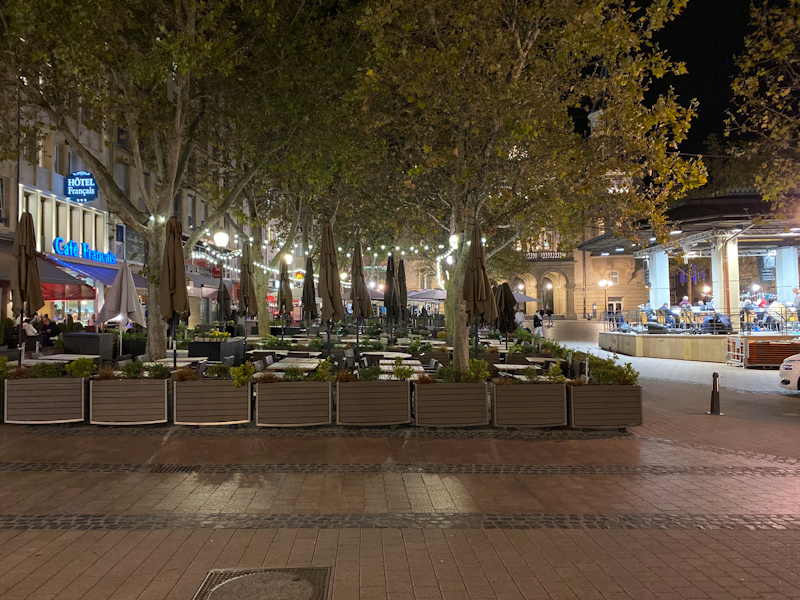
[ iPhone 11 Pro ] - [ iPhone XS ] - [ iPhone X ]
[ S10+(S) ] - [ S10+(E) ]
[ Pixel 3 ] - [ Mate 30 Pro ]
[ P30 Pro ] - [ Xperia 1 ] - [ G8 ]
Starting off with a low-light, yet still artificially illuminated scenario, we encounter the first aspect of Apple’s new camera: the night mode isn’t a dedicated mode that one can manually select. Rather, it's a mode that gets triggered automatically depending on the ambient light detected by the phone. In this scene, there was too much light available, and as such the phone wasn't able to trigger Night mode.
That isn’t to day that the iPhone falls behind, the main camera is still very much able to produce some excellent results. In such medium light scenarios, the telephoto lens’ wider aperture now allows the camera to actually use the module rather than falling back to the main sensor and cropping the scene, which is what the XS did.
Unfortunately, the wide-angle lens’ results here are just bad and it’s all just blurry. Huawei and Samsung clearly both dominate here in terms of low-light quality, with either better sensors such as the Mate 30 Pro, or making use of Night Mode on the wide-angle unit, something which isn’t available for the iPhone 11.
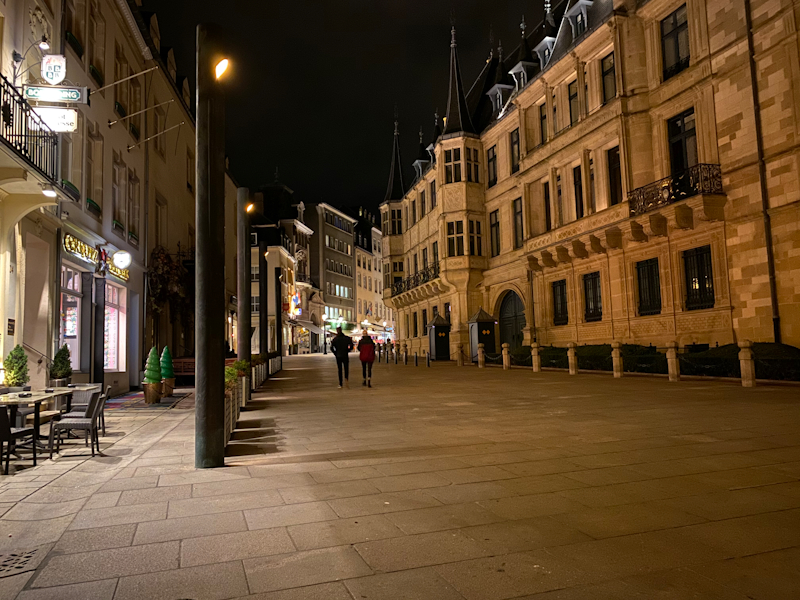
[ iPhone 11 Pro ] - [ iPhone XS ] - [ iPhone X ]
[ S10+(S) ] - [ S10+(E) ]
[ Pixel 3 ] - [ Mate 30 Pro ]
[ P30 Pro ] - [Xperia 1 ] - [G8 ]
Going to a darker scene, we now finally see Apple’s Night Mode in action. Apple’s non-night mode shot is actually more representative of the actual brightness of the scene at the time, but Night Mode really improves the amount of detail throughout the scene. Apple’s implementation here is superior to Samsung’s and Google’s, as it’s able to retain more detail and has a better handling of the noise. Samsung has the odd situation that the new Night Mode on the Snapdragon variants is inferior in quality to the Exynos based models, making things quite blurry. Huawei’s specialized low light RYYB sensor still is the best low-light camera.
It’s odd to see that Apple’s algorithm doesn’t attempt to bring down the highlights, as such the signs on the left which are still very much blown out and overexposed.
I tried to capture a picture with the Night Mode exposure set to the very maximum 10 seconds as made available in Apple’s camera UI, however the end result was always repeatedly always capped at the exposure the camera automatically selected, even if it did appear as if it’s capturing a 10 second shot. I retested this on the newest iOS 13.2 and things did change, as it was indeed able to capture a very different shot – so it seems the Night Mode behavior on iOS 13.1 is still bugged.
The iPhone’s 11 series' wide-angle module continues to be pretty terrible in low-light.
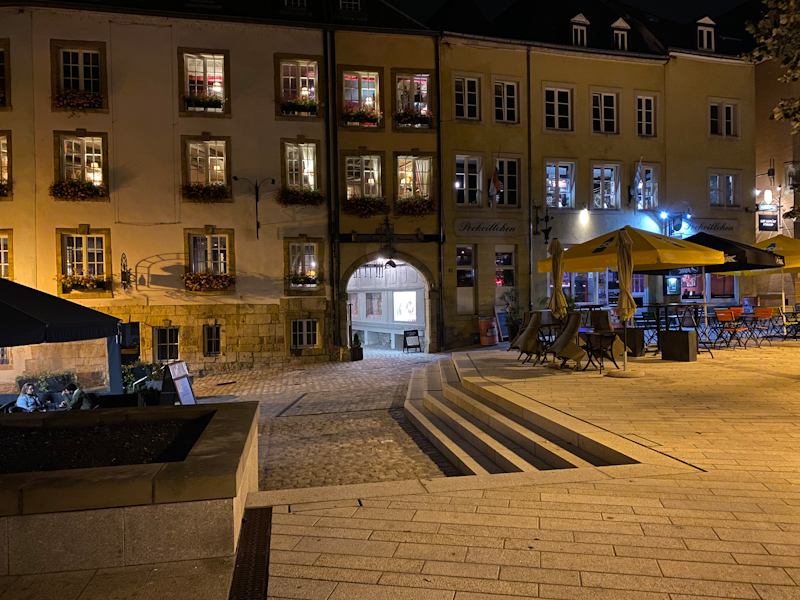
[ iPhone 11 Pro ] - [ iPhone XS ] - [ iPhone X ]
[ S10+(S) ] - [ S10+(E) ]
[ Pixel 3 ] - [ Mate 30 Pro ]
[ P30 Pro ] - [ Xperia 1 ] - [ G8 ]
Apple’s night mode here continues to impress as it’s able to reproduce an excellent representation of the scene with a lot of detail. Google’s Night Sight is comparable, or even better, in detail, however the colors are too vivid.
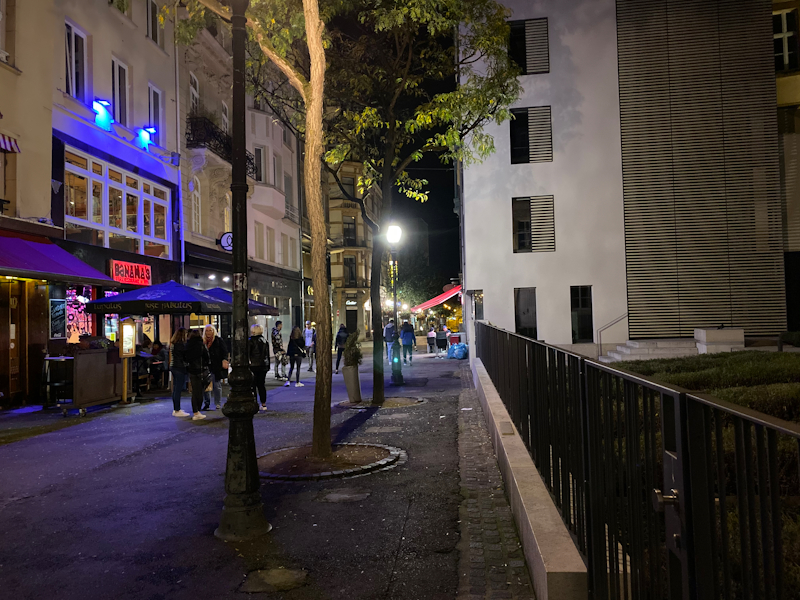
[ iPhone 11 Pro ] - [ iPhone XS ] - [ iPhone X ]
[ S10+(S) ] - [ S10+(E) ]
[ Pixel 3 ] - [ Mate 30 Pro ]
[ P30 Pro ] - [ Xperia 1 ] - [ G8 ]
We continue to observe that in more well-lit scenarios that the night mode doesn’t engage. Even without it, the new iPhone 11 is an improvement over the XS.
The wide-angle module remains terrible and frankly I’m a bit puzzled why it does so bad even in a more well-lit scene like this one. The phone gets pretty much embarrassed by all the other devices.
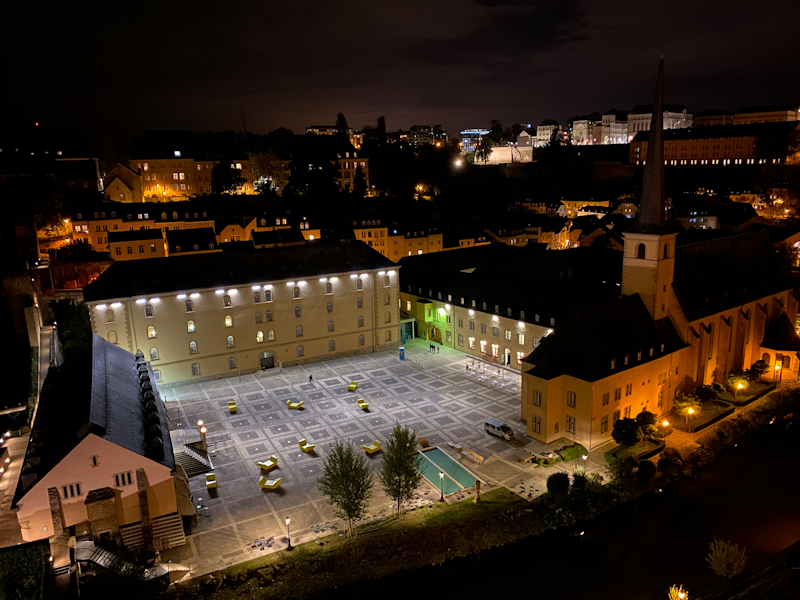
[ iPhone 11 Pro ] - [iPhone XS ] - [iPhone X ]
[ S10+(S) ] - [ S10+(E) ]
[ Pixel 3 ] - [ Mate 30 Pro ]
[ P30 Pro ] - [Xperia 1 ] - [G8 ]
One thing we notice about the new Night Mode is that it’s not really able to bring out details in areas where the sensor doesn’t see anything. For example, in this scene the roof of the abbey remains clipped to black, while other devices such as the S10 or the Pixel are able to bring out the roof’s structure and details. The darker it gets, and as long as there’s some brighter elements to the scene, we’re seemingly hitting dynamic range limitations on Apple’s night mode.
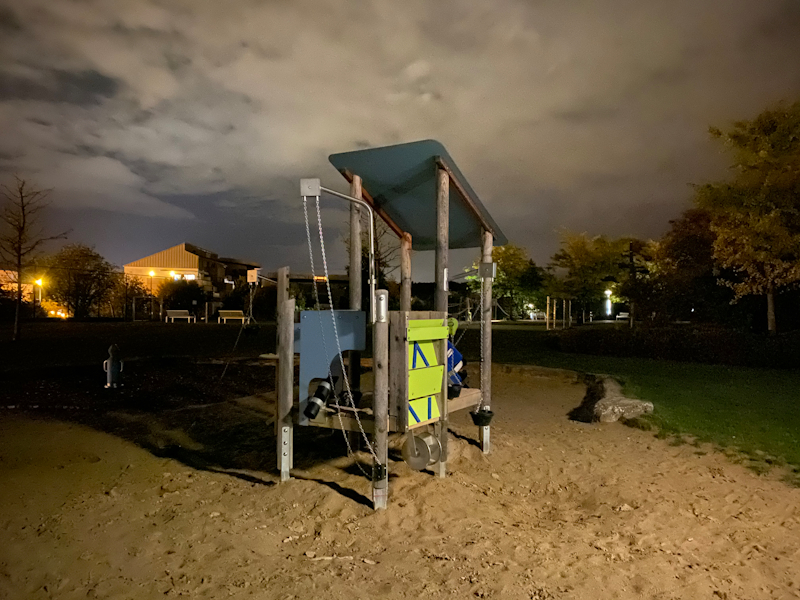
[ iPhone 11 Pro ] - [ iPhone XS ] - [ iPhone X ]
[ S10+(S) ] - [ S10+(E) ]
[ Pixel 3 ] - [ Mate 30 Pro ]
[ P30 Pro ] - [ Xperia 1 ] - [ G8 ]
In more uniformly dark areas, the iPhone is able to extract a ton of light, but in areas where the sensor just isn’t sensitive enough and it’s not able to provide any data for the algorithm to accumulate over time, it leads in some odd looking results such as this extremely pronounced shadow of the play castle.
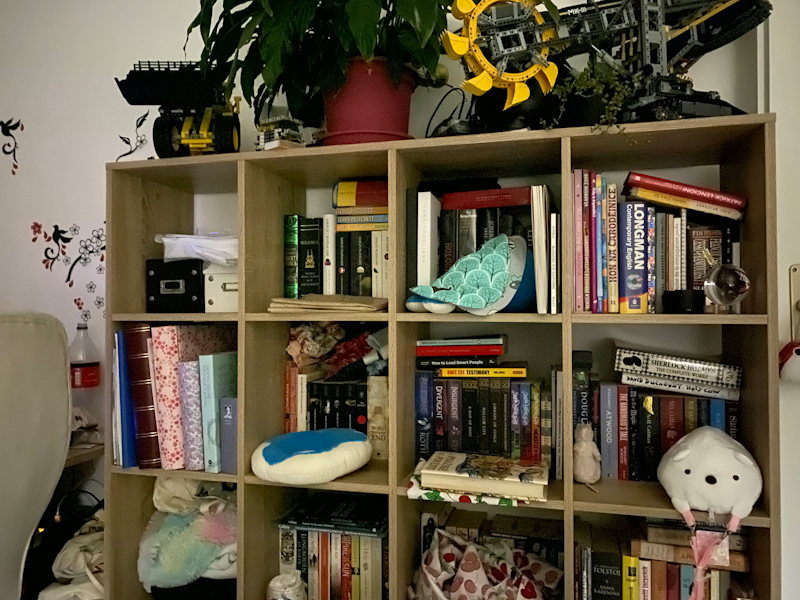
[ iPhone 11 Pro ] - [ iPhone XS ] - [ iPhone X ]
[ S10+(S) ] - [ S10+(E) ]
[ Pixel 3 ] - [ Mate 30 Pro ]
[ P30 Pro ] - [ Xperia 1 ] - [ G8 ]
Here again, in a very uniformly lit but still extremely dim scene, the iPhone 11 is able to bring out a ton of light and the result here is significantly brighter than how the scene was in reality. The iPhone beats Google and Samsung in terms of detail and only Huawei’s devices remain as the better rivals.
Low Light Conclusion – A Much Needed Feature Added, Wide Angle Lacking
Overall, Apple’s addition of the new night mode very much elevates the camera capture ability of the iPhone 11 series. It was as solemnly needed feature given that almost all other vendors in the industry have embarked on the computational photography train.
Apple’s implementation shines in a few regards: First of all the fact that it gets selected automatically rather than it being a dedicated mode that you have to switch to is a significant plus. as well as a very large practical advantage over other vendor’s camera experiences.
Quality-wise the pictures that the iPhone 11 series is able to produce in low light is top of the line and is challenged only by Huawei’s massive specialized camera sensors in terms of detail that it’s able to capture. There are a few limitations – for example the phone isn’t able to bring out details in areas where the sensor just doesn’t see anything, particularly scenes with brighter objects requiring a wider dynamic range in the capture is where things hit a snag, although details are still excellent even in these scenarios.
The biggest disappointment was the wide-angle camera. Here it’s not only that Apple’s night mode photography isn’t available for this unit, but the module doesn’t even compete against phones without their respective night modes enabled. So the iPhone 11 series is utterly put to shame when they do enable it. I do hope Apple is able to iterate on its processing for this unit as currently it’s just outright terrible and not competitive.
I do have a feeling that we’ll be seeing further updates and improvements from Apple in improving the various aspect of the camera. Already I did notice that iOS13.2 fixes exposures longer than 3 seconds for the night mode, and there’s of course the question of how Deep Fusion behaves in low-light scenarios where the night mode doesn’t kick in.










242 Comments
View All Comments
Quantumz0d - Wednesday, October 16, 2019 - link
Lol. Very funny. Just 2.5% of the screen, why not take a pencil and poke in your laptop/monitor display and say just a 0.3% like Samsung HOLED or this dead pixel zone. And put an RGB strip around/inside it to make it similar to S10 Hole notification led.A phone's primary component is Display which allows for man-machine interface, and if that itself is ruined no matter how much value the device has, it is a complete waste. Even Google realized this after their horrible Watertub 3XL disaster notch.
Notch, Hole are worse than an Asymmetric bezel on Pixel 4 and Symmetric bezels are much better to look at - V30, ROG II, Note 8, S8 while S9 and Note9, OP7 Pro, Zenfone 6, Nex have asymmetric design but they are fine over the dreaded Notch abomination or holes anyday anytime.
Apple did this crazy thing in 21 century. If engineers from CRT era were there they'd be laughing like no tomorrow. Kudos to Apple for creating something utter miserable and complete bullshit.
Why didn't the CMOS sensors / Panavision or any Film cameras or any Display shape have a notch/hole or any. Or our eyes or any animal eyes, even the insects like spiders with many eyes have full uninterrupted vision without no hole or notch in their eyes, hell even mirrors ? Until this POS hit the market the perception of a display was perfectly uniform with no interruption, it all changed thanks to Apple. They should be ashamed of creating the worst abomination while claiming the best industrial design.
"Sir" Jony Ive should be ashamed of his Knighthood lmao. Wonder he left because of Apple that he couldn't stand this Notchabomination as a black mark on his life forever (Also not note, since Chief Design Officer role doesn't exist anymore and the design teams report to Operations COO, It's interesting as if Andrei says this is the last Notch BS from Apple or whether we will see a smaller notch in 2020 lol)
uhuznaa - Thursday, October 17, 2019 - link
You have a literal blind spot in your eye where the optical nerve passes through the retina. Really. You just don't see it because it's always there. Same as with the notch by the way...Quantumz0d - Thursday, October 17, 2019 - link
No man stop convincing yourself, Retina blind spot is not notch lol. 210 Degree FoV and a blind spot how can you relate these ? Insane.uhuznaa - Thursday, October 17, 2019 - link
OK, so then just put a piece of black tape on the parts of the screen left and right of the notch and you have a bezel instead if you like this better.Seriously, what's so bad about having a bezel on top that still displays a clock and a few status symbols in the left and right corners? Exactly this is what the notch is. It just means using parts of the bezel in a limited but still useful way. I really don't understand what you notch-haters want instead of a notch. A full-width notch (aka "bezel")? Why would this be better? It would just push the status bar down, leaving less room for actual content for apps.
WinterCharm - Thursday, October 17, 2019 - link
The notch is the only weak excuse some Android fanboys have to convince themselves about why they can't move to iPhone.willis936 - Friday, October 18, 2019 - link
The space is virtually useless and makes for a more difficult user experience. Nothing is gained by forcing information into a tiny nook or to have the user need to stretch to hit a small target. Just keep the display a rectangle. It just works.Quantumz0d - Sunday, October 20, 2019 - link
Exactly, but look at the Apple apologists they will buy excuse for whatever they seem fit to make the company look great. Any wrong pointing bam personal attacks, eh. New low for AT commenters to be honest. "Insecure Android phone" these noobs do not know how an Israeli company deals with breaking smartphones. Idiots. Only god can help them.Anand2019 - Monday, October 21, 2019 - link
"Only god can help them". What does a fantasy figure have to do with this? Maybe santa can help them too?Xyler94 - Thursday, October 17, 2019 - link
Every time I look at my mother's iPhone X, the first thing that pops into my mind is "why do people fuss so much about the notch?"It's barely noticeable when you use it. It's just like your nose. your brain will ignore your nose when you're looking, but the moment you realize your nose is in your view, you'll see it again. Same as the notch, don't even think about it, and it becomes a non-factor.
Total Meltdowner - Thursday, October 17, 2019 - link
ahahahahahahahahaahAHAhahaha!